About Shiatsu
In Japanese SHI means “Fingers” and ATSU “Pressure”. The treatment is rooted in Taoist Philosophy and Traditional Chinese Medicine. It aims to release tensions from the body and mind in helping Yin and Yang energies of the body to flow freely. In May 1997, Shiatsu was acknowledged by the European Commission as one of the eigth complementary Medicines.
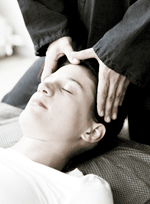
The Benefits of Shiatsu
Shiatsu supports the body self-regulation and vitality. Thus receiving regular Shiatsu can lead us to live with and understand, a mind-body-environment inter-connection and be more aware of how to better keep balance, harmony and vitality in our life.
People often compare it to micro-osteopathy and experience it as “relaxing, nurturing, non-invasive and deeply therapeutic”.
Shiatsu is a natural and empowering way to fight stress and prevent health imbalances such as insomnia, headache, nervousness, back pain, muscles and joint pain, poor digestion. Most people report a sense of deep relaxation after the first session.
Shiatsu aims at helping maintaining the free flow of life energy (KI or QI or Prana) in the body, creating harmony and flexibility between the body and its environment.
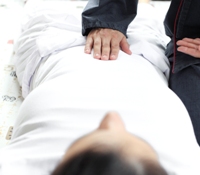
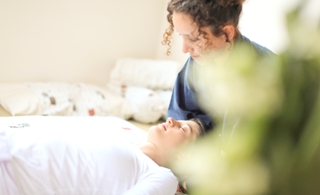


How does Shiatsu work?
Shiatsu is practiced on the whole body, fully clothed, on a futon mat. It includes the use of finger pressure (thumbs), but also palms, elbows and occasionally the knees along the meridians or energy channels running through the body. Those are similar to the meridians used in Acupuncture/TCM.
Anne uses the IOKAI Shiatsu technique of 2 hands working in synchronization to provide a pressure that is deep, stable and slowly moving along the body. Combined with a holistic view of the receiver to awaken his/her body’s innate healing ability, to release emotional, mental, and physical blockages, and to restore life essence and present awareness.
When working on a specific health condition it is recommended to experience at least 4 sessions within a month, to support the body’s shifts and to achieve significant and long lasting change.

The Origins of Shiatsu
Shiatsu is a Japanese practice that comes from TE ATE (Te=hand ate= to place, referring to a “healing quality of compassionate/ intuitive touch”, common to all cultures in human history).
Shiatsu finds its origins in ANMA and DO IN AN KYO. ANMA in Japanese means massage or massage therapist. It refers to the oldest known form of traditional Asian massage.
ANMA
Anma Massage originated in China (Tuina) 3000 years ago and was introduced to Japan about 1300 years ago. Using no oil, Anma involves stretching, application of pressure and massaging based on kneading movements to stimulate the body to become and/or remain healthy.
Since 1964 Shiatsu was recognized as a practice distinct and independent from Anma massage and has grown into a counter part of the western approach to health and medicine in Japan.
DO IN AN KYO
It commonly refers to a range of self/duet stretching and mobilizations, self massage and breathing exercises aiming at resting and calming the mind. This practice, based on improving the corporal consciousness, helping the person’s awareness of his/her body and hence his/her interconnection to the environment. Do In An kyo improves the circulation of energy, a basic belief in oriental therapies, which is considered a base for an healthy life. We can compare it to Qi Gong and Tai Qi disciplines that seek vitality and longevity.
The Background of IOKAI Shiatsu
Shizuto MASUNAGA Sensei, whose research most Shiatsu practitioners refer to today, created IOKAI SHIATSU in Japan.
He started Shiatsu as a child with his parents, and his passion led him to a life’s work in research resulting in a unique and profound style incorporating his background of psychology and Traditional Chinese Medicine.
All over the World Masunaga Sensei’s heritage is known as Zen Shiatsu or Shiatsu of Meridians. “Iokaï” ideograms encompass the nature of a direct exchange from person to person.
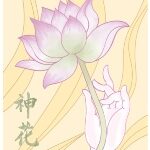

What is IOKAI Shiatsu?
IO “The King Of Medicine” comes from a Buddhist Sutra that is concerning to “The one that knows its imbalances and determines the fitting means to heal definitively”.
KAI “Association, communication of people under the same roof”. With deterioration of our state of health, the modifications that are required to be induced physically and psychologically to heal, allow us to better understand the phenomenon of Life itself. Symptoms are an indication of the imbalance, and should be integrated into a more holistic comprehension of what/who we are, and of our way of life.
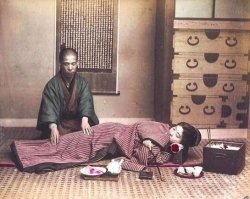
The Zen Shiatsu IOKAI is more than a simple “manual technique”. It is based on a very profound communication and subtle awareness. Through touch and giving support to life, it fully engages the receiver and the giver (Body -Mind).
Teachers, students, and practitioners of IOKAI SHIATSU all share a deep interest and humility toward the nature of Life itself.